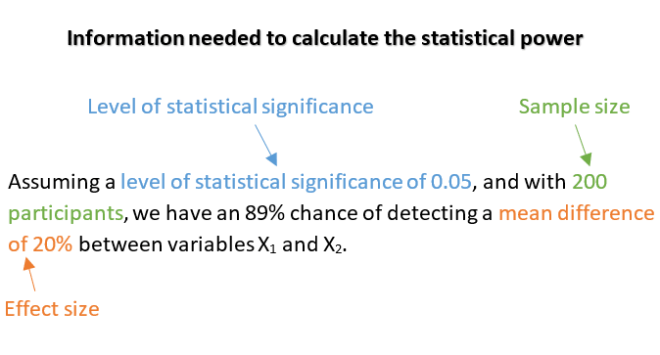how to Calculate Power of a Study
When conducting research studies, it is important to ensure that the study has enough statistical power to detect meaningful results. Power analysis is a crucial step in the research process that helps researchers determine the likelihood of detecting an effect if it truly exists. In this article, we will discuss what power of a study means, how to calculate it, and why it is important in research.
What do you mean by Power of a Study?
The power of a study refers to the probability that the study will correctly detect a true effect if it exists. In other words, it is the likelihood that the study will identify a statistically significant result when there is truly an effect present in the population. Power is influenced by various factors, including sample size, effect size, and alpha level (significance level).
How to Calculate Power of a Study?

Image Source: quantifyinghealth.com
There are several ways to calculate the power of a study, depending on the type of analysis being conducted. One common method is to use statistical software or online calculators that are specifically designed for power analysis. These tools typically require input parameters such as sample size, effect size, alpha level, and sometimes other factors like the standard deviation of the outcome variable.
Another method for calculating power is to use statistical formulas, such as the formula for power in a two-sample t-test. This formula involves inputting the sample size, effect size, standard deviation, and alpha level into the equation to determine the power of the study.
It is important to note that power calculations are based on assumptions about the effect size and other parameters. Researchers should carefully consider these assumptions and conduct sensitivity analyses to assess the robustness of their findings.
What is Known about Power Analysis?
Power analysis is a fundamental concept in research methodology, and it plays a crucial role in the design and interpretation of studies. A study with low power is more likely to miss true effects, leading to inconclusive or misleading results. On the other hand, a study with high power is more likely to detect real effects and provide reliable evidence for decision-making.
Researchers should aim for a power of at least 0.80, which is commonly considered adequate for detecting effects in research studies. However, the desired power level may vary depending on the research question, the field of study, and other factors.
Solution to Calculating Power
One way to improve the power of a study is to increase the sample size. Larger samples are more likely to detect small effects and produce more reliable results. Researchers should carefully consider the trade-offs between sample size, cost, and feasibility when planning their studies.
Another way to enhance power is to focus on increasing the effect size. Researchers can do this by designing interventions or treatments that are more potent or by selecting outcome measures that are more sensitive to change. By maximizing the effect size, researchers can improve the chances of detecting significant results.
Additionally, researchers can adjust the alpha level (significance level) to increase power. By lowering the threshold for statistical significance, researchers can reduce the likelihood of Type II errors (false negatives) and increase the power of the study to detect true effects.
Information on Power Calculation
Power calculations are essential for informing study design, sample size determination, and data analysis. Researchers should conduct power analyses before beginning their studies to ensure that they have adequate resources to detect meaningful effects. By understanding the power of a study, researchers can enhance the quality and reliability of their research findings.
It is important to consider the limitations of power analysis, including the assumptions and uncertainties involved in estimating effect sizes and other parameters. Researchers should interpret power calculations with caution and use them as a guide rather than a definitive answer.
Conclusion
Calculating the power of a study is a critical step in research methodology that helps researchers determine the likelihood of detecting true effects. By considering factors such as sample size, effect size, and alpha level, researchers can optimize the power of their studies and produce more robust and reliable findings. Power analysis is an essential tool for enhancing the quality and validity of research studies.
FAQs
1. Why is power analysis important in research?
Power analysis helps researchers determine the likelihood of detecting true effects in their studies, leading to more reliable and valid research findings.
2. What factors influence the power of a study?
Sample size, effect size, and alpha level are key factors that influence the power of a study.
3. How can researchers increase the power of their studies?
Researchers can increase power by increasing sample size, maximizing effect size, and adjusting the alpha level.
4. What is the recommended power level for research studies?
A power of at least 0.80 is commonly recommended for research studies to ensure adequate detection of effects.
5. How can power analysis be used in study design?
Power analysis can inform study design by guiding decisions on sample size, effect size estimation, and statistical analysis methods.
6. What are the limitations of power analysis?
Power analysis is based on assumptions and estimates, which may introduce uncertainties and biases into the calculations.
7. How can researchers interpret power calculations?
Researchers should interpret power calculations as a guide rather than a definitive answer, considering the uncertainties and assumptions involved in the analysis.
how to calculate power of a study







